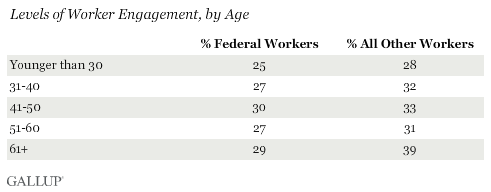
Tigger11th/Shutterstock.com
Disengaged Employees, Lackluster Pay and More
A weekly roundup of pay and benefits news.
It looks like 2014 will end with a whimper instead of a bang for federal employees, and that’s good news, considering what the bang might have been. Despite some 11 th -hour brinksmanship, lawmakers approved and President Obama signed a $1.1 trillion spending plan for 2015. That means you can stop worrying about potential furloughs or a government shutdown before next fall, unless you work for Homeland Security, in which case you still have a reprieve until late February.
The law allows for a 1 percent pay raise for federal employees and military personnel . While that’s probably not going to make anyone break out the champagne, it’s certainly better than the three-year pay freeze feds experienced prior to the 1 percent raise they got in 2014.
The only folks who won’t see a pay increase are top political appointees and Vice President Biden. Lawmakers also froze their own salaries, so there’s some consolation in the fact that they didn’t reward themselves for an historically unproductive year.
Employee travel and conference spending also took a hit , but the biggest constraints fall on Homeland Security, a casualty of Republican furor over Obama’s executive action on immigration. DHS will receive funding through Feb. 27 frozen at 2014 levels and isn’t authorized to begin new projects or purchase new ships for the Coast Guard.
Republicans hope to use their new majority in 2015 to block Obama’s action, but in reality they’ll have very little leverage .
For more information about the winners and losers of the 2015 spending deal, see Eric Katz’ story from last week.
Given the political football, it's perhaps inevitable that many federal employees just aren’t that into their jobs . At least that was the finding of recent Gallup research that showed feds are less invested in their jobs than other Americans. According to the company:
U.S. federal government workers are less engaged than the rest of the U.S. workforce. On average, 27 percent of federal government employees are engaged in their jobs in 2014, compared with 31 percent of all other workers in the U.S. With more than 2 million federal employees, this lack of engagement is costing the federal government an estimated $18 billion in lost productivity annually, or approximately $9,000 per employee.
The Gallup findings are no surprise to anyone following the Office of Personnel Management's annual Federal Employee Viewpoint Survey results, which show federal employee job satisfaction at its lowest levels since 2003. Gallup defines “engagement” as having an emotional investment in the organization—a higher bar than mere satisfaction.
What should be especially troubling to federal leaders is that the Gallup data show lower levels of engagement among federal workers of all ages, but the gap widens with age.

As Gallup notes:
Low engagement is causing the federal government to lose value from its employees in terms of productivity, arguably more than those in all other work sectors per employee. Gallup research shows that measuring and improving engagement is linked to positive organizational outcomes such as improved retention, higher customer satisfaction and loyalty metrics, increased productivity, fewer safety claims, and minimized absenteeism. For example, Gallup estimates that absenteeism due to low engagement costs U.S. companies approximately $1 billion per year.
So what should managers do? “If OPM and the rest of the federal government is looking for a simple way to increase federal workers' engagement and reap the benefits of doing so, they could start by managing to employees' strengths, which directly contributes to engagement,” the researchers said.
( Image via Tigger11th / Shutterstock.com )
NEXT STORY: OPM Changes Snow Day Leave Policy






